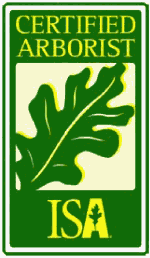



Washington hawthorn
Crataegus phaenopyrum
Washington hawthorn is a small, deciduous tree with a mature height of 25 to 30 feet and spread of 20 to 25 feet. Joint holder of the Missouri State Flower designation with other hawthorns, this tree is appropriate for small and larger yards and near utility lines. Excellent for wildlife, it’s thorns provide protection from predators and food from the small red fruits in the fall. The showy white flowers in the spring, the orange to red leaves and red fruits in the fall add beauty to the landscape. The specie does best on better drained soils and can withstand drought. Some pests may affect this specie with lace bugs being the most serious. Trunk injections of systemic and foliar applications of insecticides provide adequate control. Several cultivars exist with 'Clark,' 'Manbeck Select,' and 'Princeton Sentry' providing the most benefits.
Plant illustration by Dale Larison, Missouri Department of Conservation
American Standard for Nursery Stock - ANSI Z60.1-2004

|
If you buy, sell, plant, order, propagate, or grow nursery stock you need the American Standard for Nursery Stock. The standard covers trees, shrubs, bulbs, roses and more.
Important to the tree industry is the Standard changes the way a root ball is measured over previous standards. The root ball must now be measured in reference to the root crown of the tree versus the top of the ball. This corresponds to the research related to stem girdling roots and the new MDC Standard Tree Planting Detail.
This publication was written by a committee of individuals from the nursery industry and compiled by the American Nursery and Landscape Association for the American National Standards Institute.
Due to the importance of this publication, ANLA has made it available for free as an Adobe Acrobat file on the Internet at: https://www.anla.org/publications/index.cfm
Take Care of your Trees
Arbor Day is over with many trees planted before, during, and after it. Now you need to take care of those trees. Yard, park, and street trees need help from people to stay healthy and thrive in these environments, unlike what we hope for when the trees were planted.
There are several simple things you can do to help your trees. 1) keep power equipment away - mowers and trimmers easily damage the bark and allow infection of the tree. Proper use of mulch and herbicides like glycophosphate eliminate the need for vegetation control near them. 2) Water trees appropriately. One and One-half inch a week, all at one time, over the entire root zone is good. Remember a trees roots extend out in all directions two to four times the tree height after being planted a few years. 3) Check for insect and disease damage periodically. Early detection and proper diagnoses of problems is the best way to deal with pests. This will allow you to select an appropriate treatment, if needed at all.
ISA Arborist Certification Scholarships Available

|
ISA is again making available scholarships to their Certified Arborist program. This is only the second time such an opportunity has been available in Missouri. Applications are due July 1st. The primary focus of this program is to increase the number of Certified Arborists in the more rural areas of MO.
The scholarship will cover the cost of ISA and Chapter membership for one year, the ISA Certified Arborist certification exam, and a local or regional training workshop (including the ISA Certification Study Guide) to help the arborist prepare for the exam.
In return for the scholarship, the arborist must provide 80 hours of community service over a two year period in the community or communities where he or she works. These 80 hours must be work given over and above normal job duties.
This scholarship is only available to arborists residing and working in Missouri. All applicants must meet the requirements for certification. Download an ISA Certified Arborist application at www.isa-arbor.com/certification/resources/certapp.pdf. Jon Skinner ( Jon.Skinner@mdc.mo.gov, 417-629-3423) has scholarship applications by request. Please submit the Arborist application along with the Scholarship application by July 1st to Justine Gartner, MDC, P.O. Box 180, Jefferson City, MO 65102-0180.
Oak Wilt and Tree Growth Regulator Training - June 21, 2005
Oak wilt is a fungal disease of oaks that is becoming more common in SW Missouri. To assist you with understanding this malady, the Springfield Chapter of the Missouri Community Forestry Council, in conjunction with ArborCare of the Ozarks, and Rainbow Treecare Scientific will host a morning training session covering the biology, and treatments of this fungus. In addition, the use of a tree growth regulator to improve tree health will also be discussed. The workshop will be held on the SMSU campus in room 102 of Karl's Hall. Park in Lot 22 off Grand St., Springifield. The program is 9:00 A.M. to noon and is worth 3 ISA CEU's.
Utilities and their line clearance contractors are invited to an one hour session from 1 P.M. to 2 P.M. to learn how the use of tree growth regulators near utility lines can reduce line clearance expenses.
To register for either of these training opportunities, contact Cindy Garner by email ( Cindy.Garner@mdc.mo.gov) or phone (417-895-6881 ext. 1037)